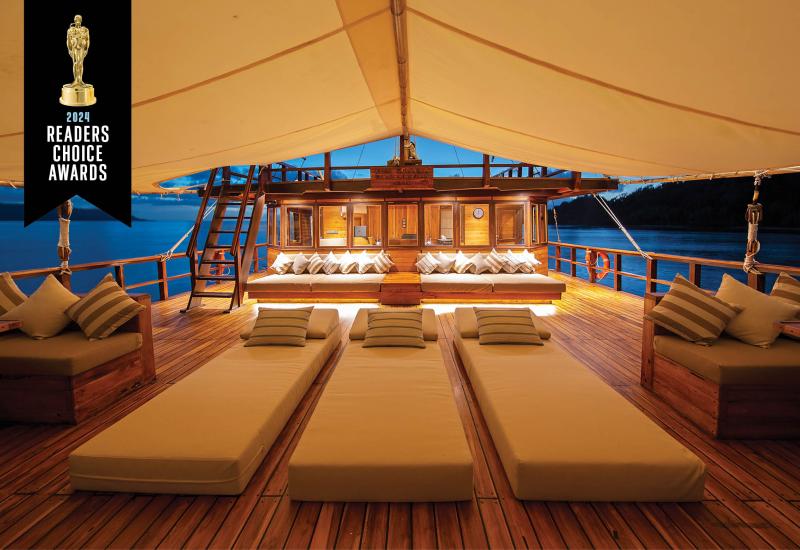My Island Nation Rallied to Fight An Oil Spill. Here's What We Learned.

Shutterstock.com/OhrimOil cleanup efforts at the site of the Wakashio spill.
As businesses around the world struggled with COVID restrictions last summer, Mauritian barbers had never been busier—they were offering free cuts to anybody donating their hair to save our lagoon.
Late last July, the Japanese cargo ship M/V Wakashio ran aground on a coral reef in one of the most iconic conservation areas of Mauritius, my island home. Our waters are part of a global biodiversity hotspot, home to roughly 800 kinds of fish and 17 marine mammals, according to the UN Convention on Biological Diversity, and the Coastal Waters of our Black River District are recognized by Sylvia Earle’s Mission Blue as a Hope Spot, a marine region so vital to the health of the planet it must be protected. Wakashio crashed near Ile aux Aigrettes, an islet on the other side of the main island dedicated to the conservation of endemic species, and the Blue Bay Marine Park, the island’s most important marine protected area.
Despite government reassurances that its precautions after the grounding would prevent any spill, the vessel broke open almost two weeks later. Roughly 1,000 tons of oil poured into the reef, lagoon and adjoining mangrove habitats. The sight of dark, heavy oil overtaking our turquoise waters shook Mauritians like never before. We were facing an unprecedented environmental emergency.
In the following weeks, at least 50 dead cetaceans, mostly melon-headed whales, washed ashore near the spill area. Overwhelming outrage over the potential link between this stranding and the oil spill led more than 150,000 Mauritians—about one out of every eight people nationwide—to protest in the capital of Port Louis and demand a full investigation into the spill.
It was a remarkable moment. Protests are rare in this country, and despite being an island nation, I usually see disinterest in our beautiful ocean among my fellow Mauritians. I’ve worked around the Blue Bay Marine Park, as well as with surrounding fishing villages, over the past five years to better understand the system’s complexities and role in our national heritage. Here and in my previous position at a marine conservation organization, I realized the limited public interest in the marine environment—most of us do not even know how to swim!
Yet when these waters were threatened, we experienced community mobilization like never before. Citizens across all economic and sociocultural backgrounds worked relentlessly side-by-side to protect our iconic lagoon and shoreline. Volunteers from every corner of the island made artisanal oil booms; fabric bags stuffed with sugar cane bagasse (a locally available byproduct of our sugar industry) were strapped to empty plastic bottles for buoyancy and put afloat to act as an oil barrier. When we learned hair packed into pantyhose could create ad hoc oil absorbents, calls on social media to donate hair went viral. The Mauritian diaspora shipped their hair clippings to try and help from as far away as Canada and Australia! Financial donations also poured in from around the world to help local initiatives immediately begin cleaning the lagoon and prepare for post-crisis expenses, such as monitoring wildlife impacts.

Greet Meulepas — Mission Blue's Black River District Hope Spot ChampionVolunteers assemble oil absorbents from nylon stockings and hair clippings.
Within two days of the incident, Eco-Sud, a local nongovernmental organization, received more than 7,000 volunteer requests to support cleanup efforts on the ground. Business owners, fishers, locals and friends rallied with strength—at a time when government officials claimed the nation lacked the means to handle the situation. Instead, Mauritians worked together to make a difference, no matter how small, and no matter the sacrifices. Oil is a dangerous neurotoxin, but that didn’t stop local fishers and citizens from installing oil booms and collecting this toxic tar in buckets to shield their homes and livelihoods.

Greet Meulepas — Mission Blue's Black River District Hope Spot ChampionHandmade oil booms.
It is worth noting experts from countries such as France and India supported the disaster response in the immediate aftermath, from cleanup to planning long-term monitoring. The Mauritian government, United Nations offices, and embassies in Mauritius facilitated these cleanup and post-disaster relief collaborations. I’m grateful for their support because we were clearly not prepared, but I will always remember how Mauritians came together—suddenly, within hours, as a country—to protect our waters. Before the spill, there was seemingly little interest in marine parks and conservation zones. Once these areas were threatened, the risk became tangible. Abstract concepts like marine parks and conservation zones hit home. People stepped up to protect them.
We must now leverage that consciousness for other environmental pressures facing our island nation. It took a disaster of catastrophic proportions for Mauritians to remember how much we love and care for our marine environment, and what we can do to preserve it. Let that be a lesson for the world.



8903.png)






